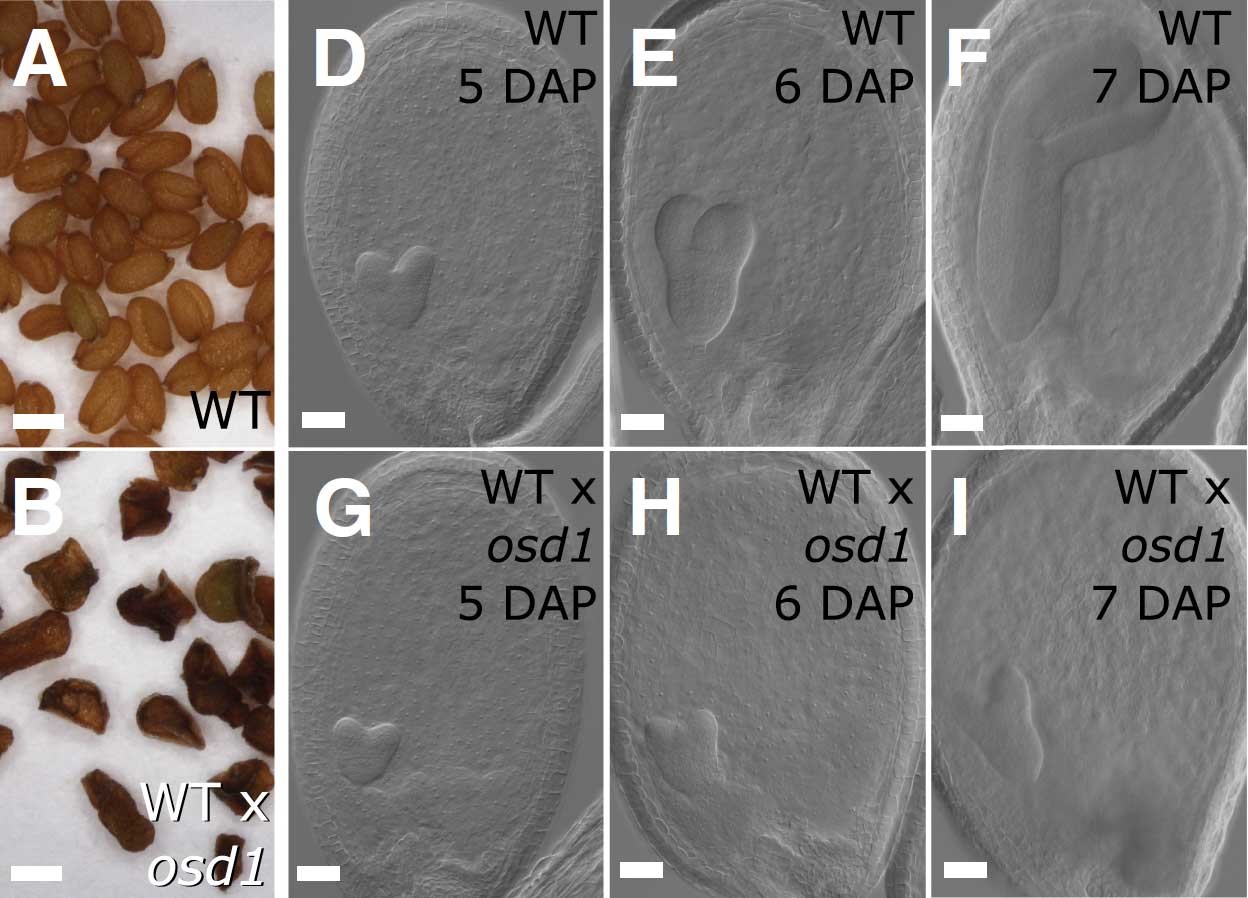Auxin regulates endosperm cellularization in Arabidopsis
First author: Zeng Tao; Affiliations: Swedish University of Agricultural Sciences (瑞典农业科学大学): Uppsala, Sweden
Corresponding author: Claudia Köhler
The endosperm is an ephemeral (短暂的) tissue that nourishes the developing embryo, similar to the placenta (胎盘) in mammals. In most angiosperms, endosperm development starts as a syncytium, in which nuclear divisions are not followed by cytokinesis. The timing of endosperm cellularization largely varies between species, and the event triggering this transition remains unknown. Here we show that increased auxin biosynthesis in the endosperm prevents its cellularization, leading to seed arrest. Auxin-overproducing seeds phenocopy paternal-excess triploid seeds derived from hybridizations of diploid maternal plants with tetraploid fathers. Concurrently, auxin-related genes are strongly overexpressed in triploid seeds, correlating with increased auxin activity. Reducing auxin biosynthesis and signaling reestablishes endosperm cellularization in triploid seeds and restores their viability, highlighting a causal role of increased auxin in preventing endosperm cellularization. We propose that auxin determines the time of endosperm cellularization, and thereby uncovered a central role of auxin in establishing hybridization barriers in plants.
胚乳是植物种子中的组织,存在的时间比较短暂,主要的作用是为发育中的胚胎提供营养,类似于哺乳动物中的胎盘。在大多数的被子植物中,胚乳的发育起始于多核体,核分裂后并不会发生细胞的分裂。不同植物之间胚乳细胞化的时间点差异很大,并且目前还不清楚具体是什么因素诱导了胚乳的细胞化。本文中,作者的研究显示胚乳组织中生长素生物合成的增加会阻碍胚乳的细胞化进程,从而导致种子的发育停止。生长素合成过多的种子的表型类似于二倍体母本与四倍体父本杂交形成的三倍体种子的表型。在这种三倍体种子中,生长素相关基因的表达显著增强,并且生长素的活性也有所增加。降低三倍体种子中的生长素生物合成及信号转导能够重新建立胚乳的细胞化,并且能够拯救种子的败育表型,说明生长素的增加阻止了胚乳的细胞化进程。本文的研究显示生长素决定了胚乳进入细胞化的时间,从而揭示了生长素在植物杂交障碍中的重要作用。
通讯:Claudia Köhler (http://kohlerlab.se/people/claudia-kohler/)
个人简介:1999年,德国佛雷堡大学,植物细胞生物学博士;1999-2000年,德国佛雷堡大学,细胞生物学博士后;2000-2003年,苏黎世大学,植物发育遗传学博士后。
研究方向:种子发育和植物物种形成的遗传、表观机制。
doi: 10.1101/gad.316554.118
Journal: Genes & Development
Published online: February 28, 2019
转载本文请联系原作者获取授权,同时请注明本文来自郝兆东科学网博客。
链接地址:https://wap.sciencenet.cn/blog-3158122-1172491.html?mobile=1
收藏




